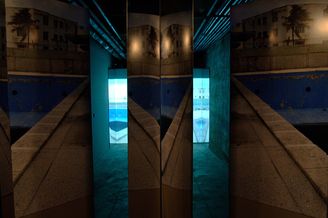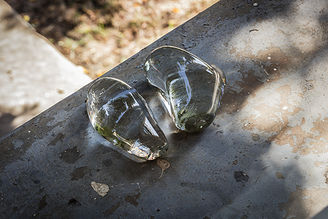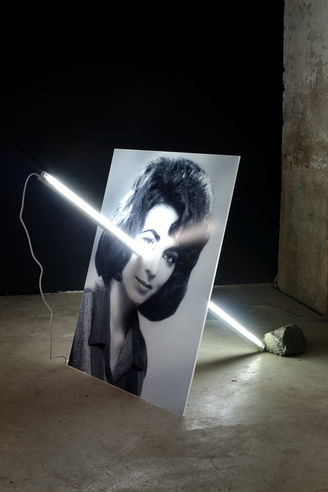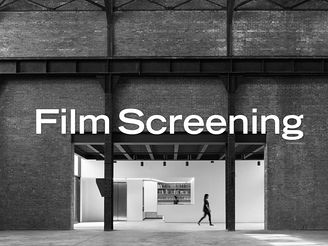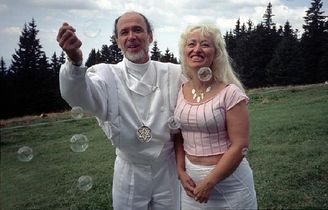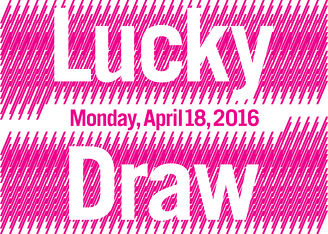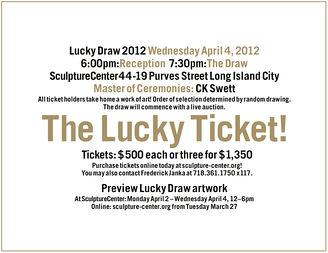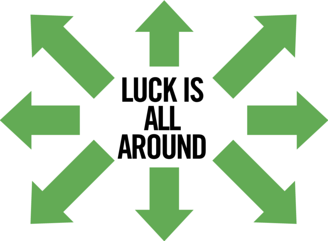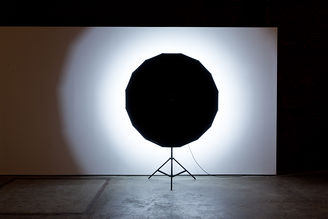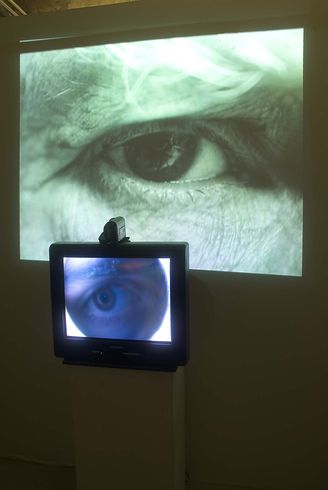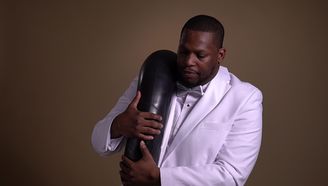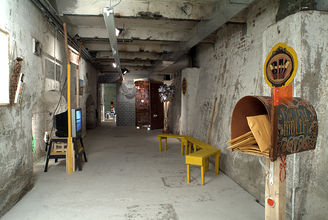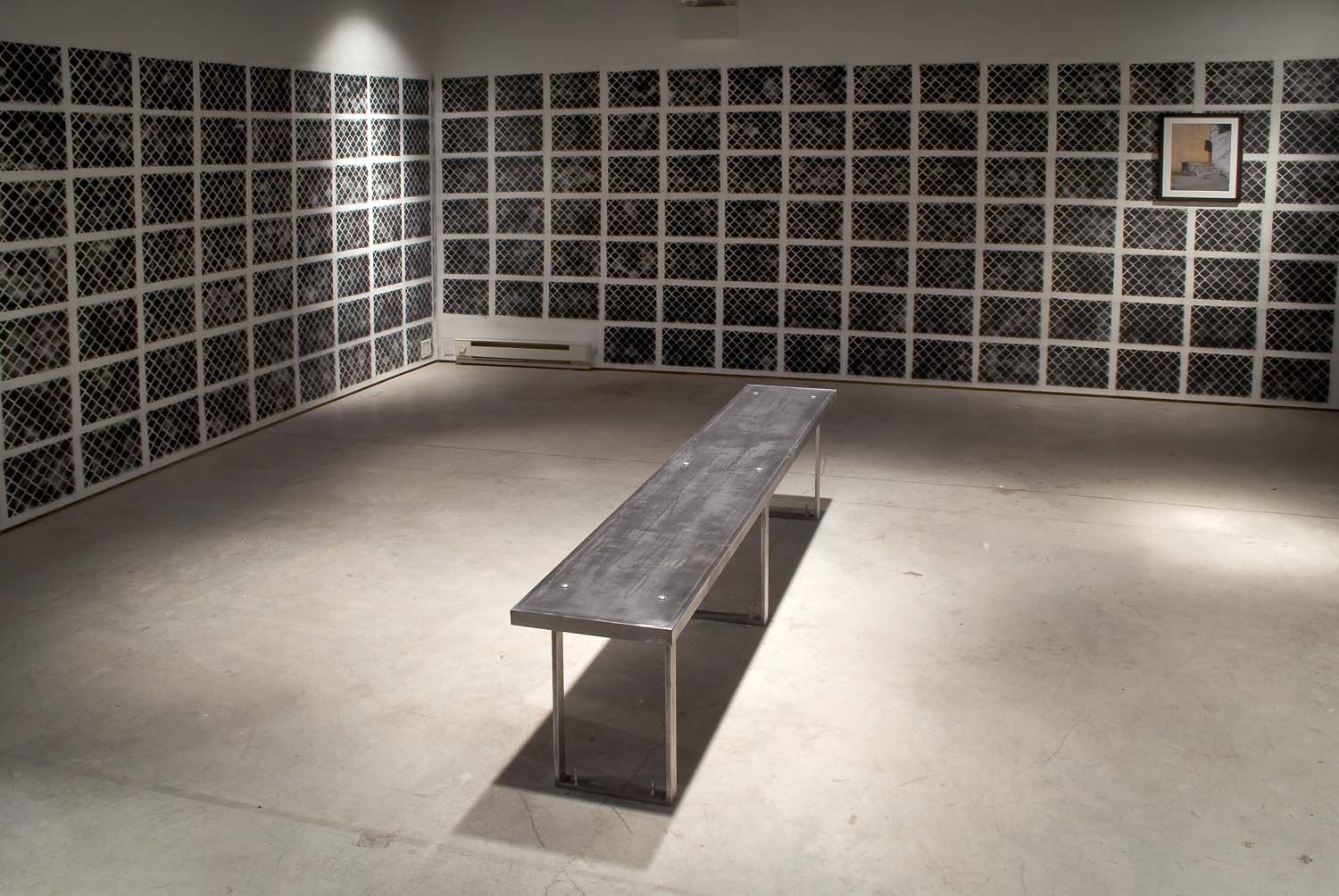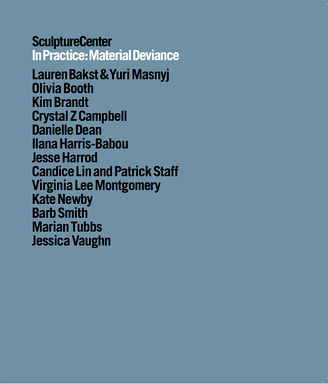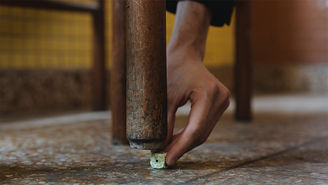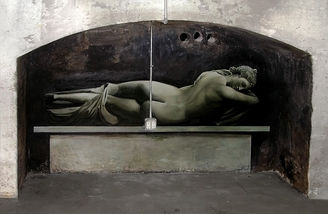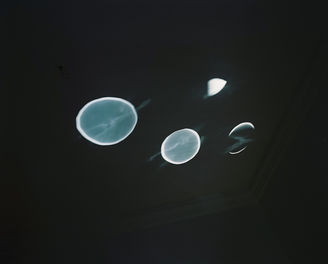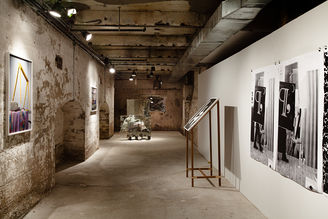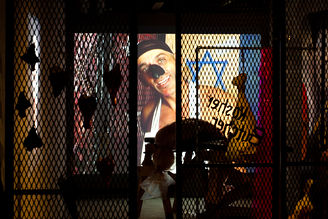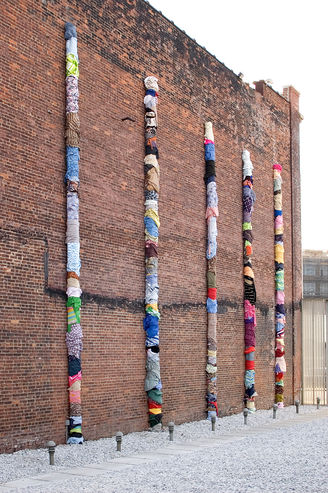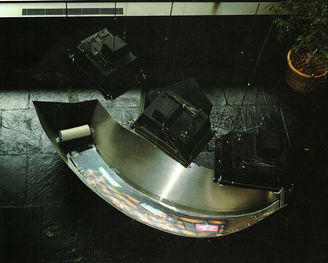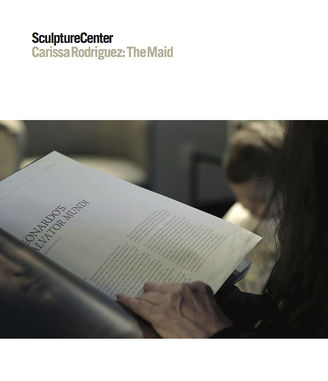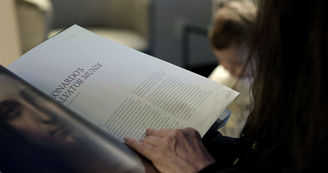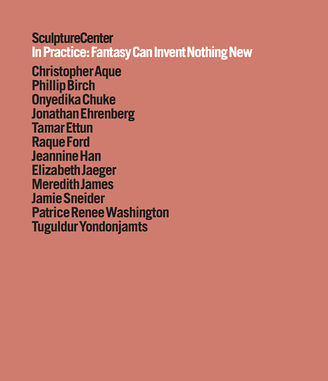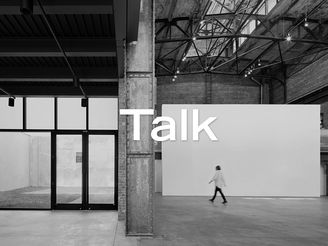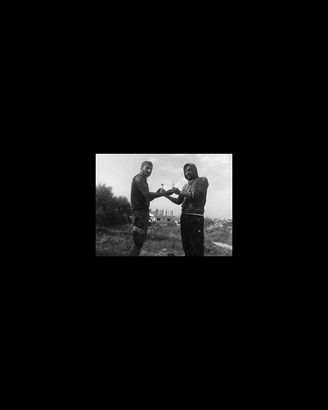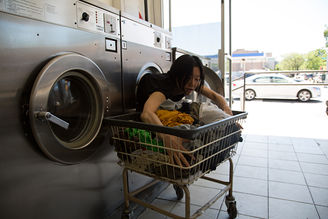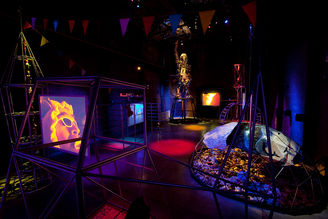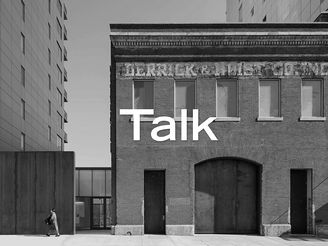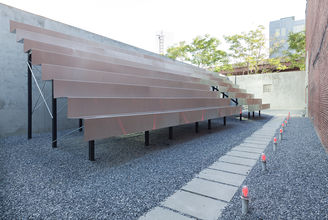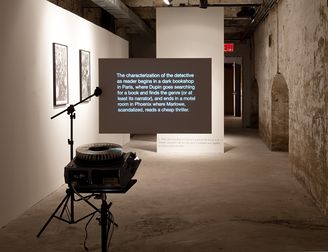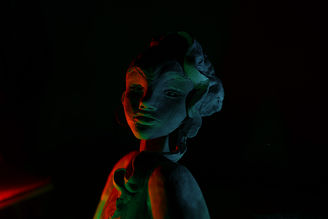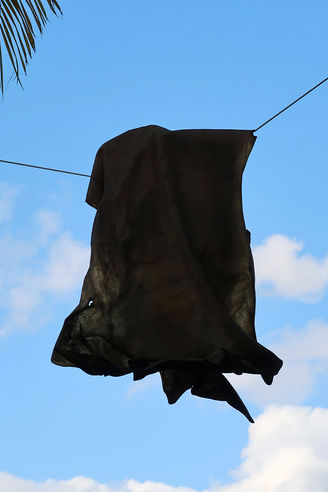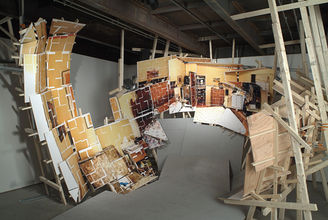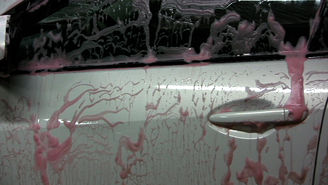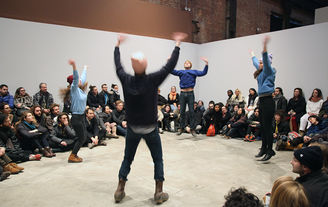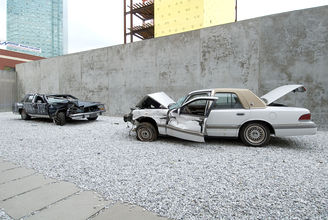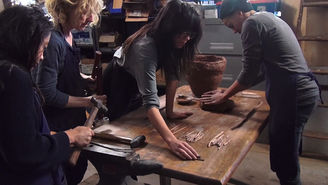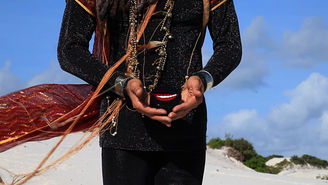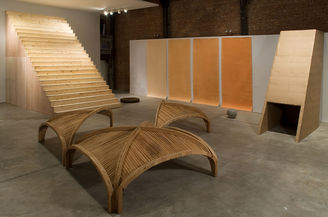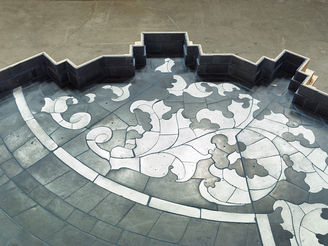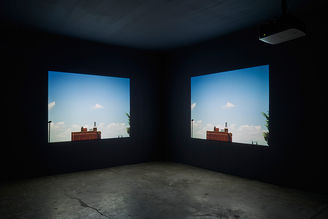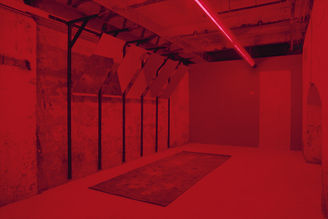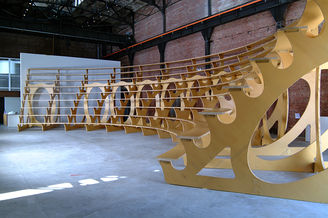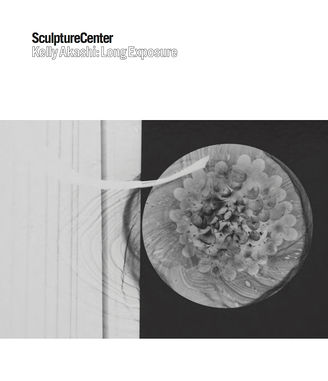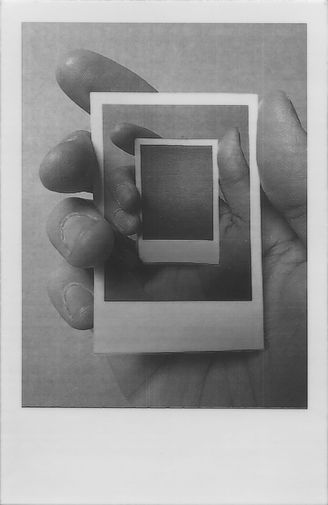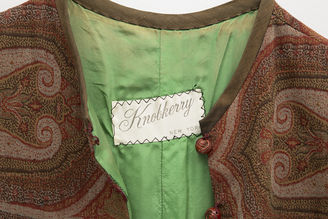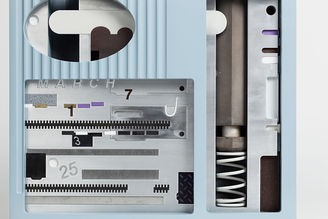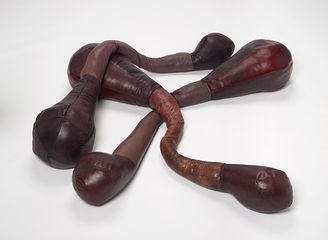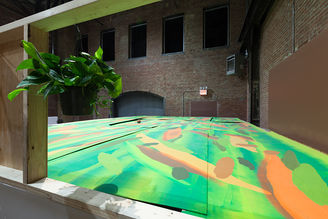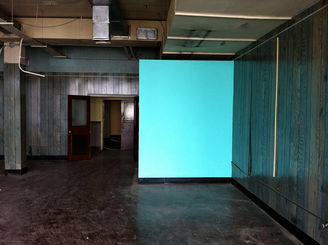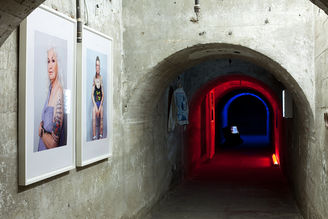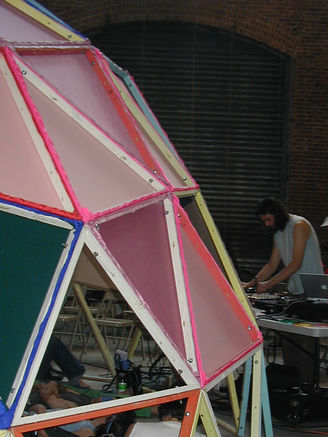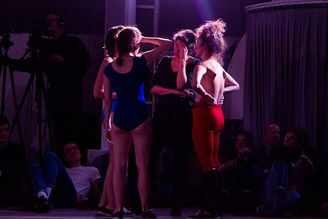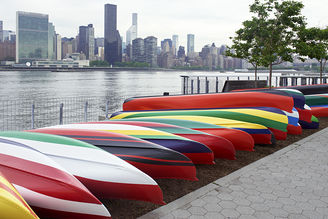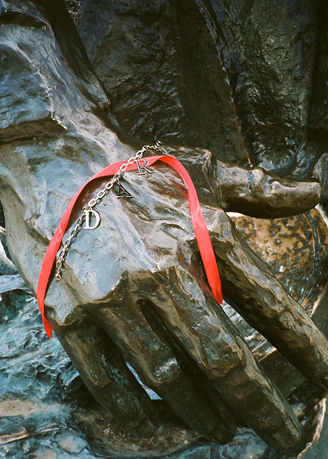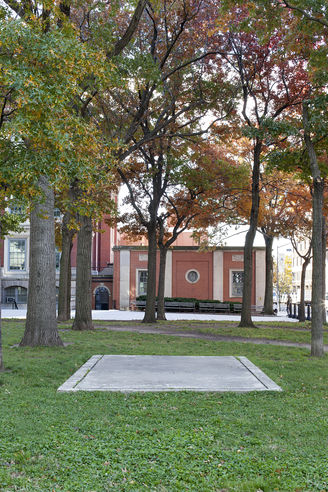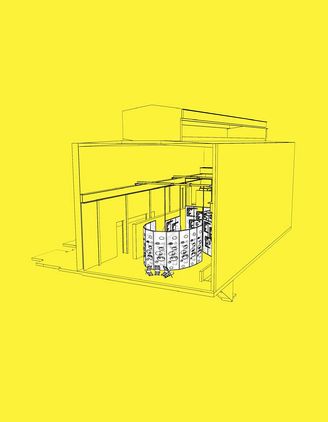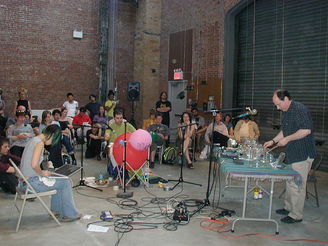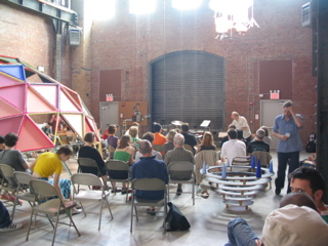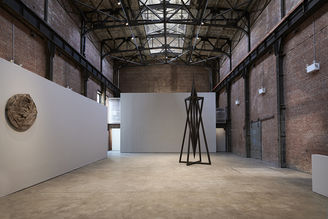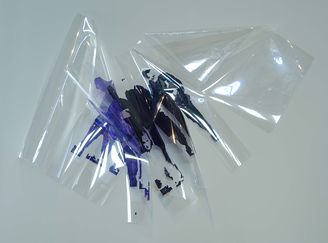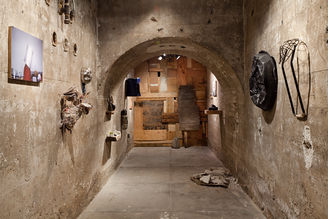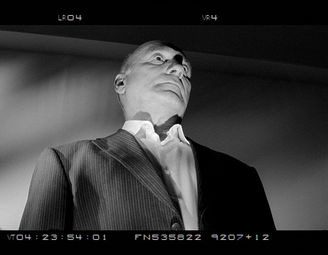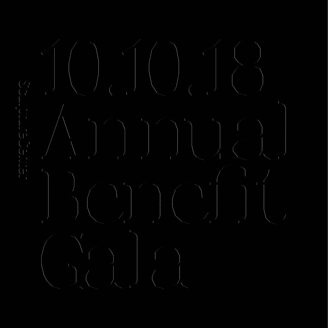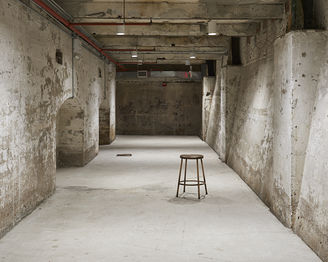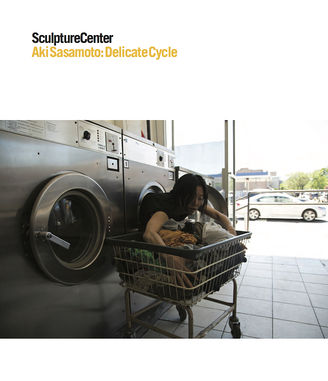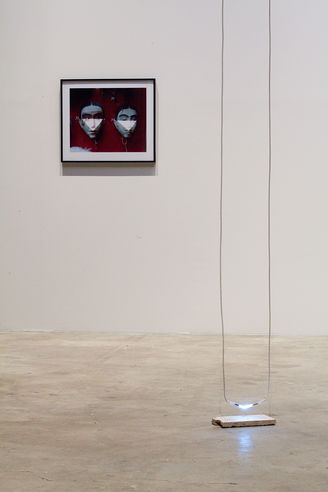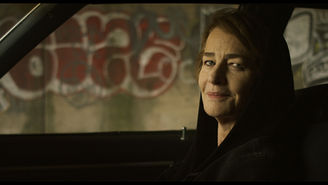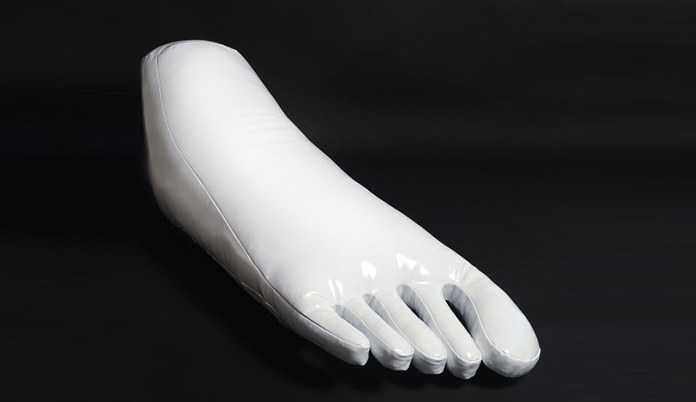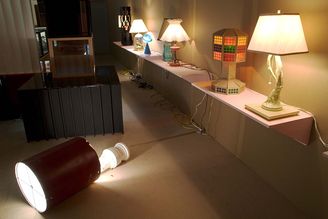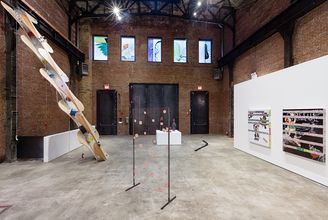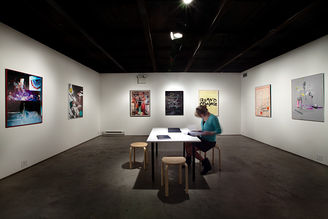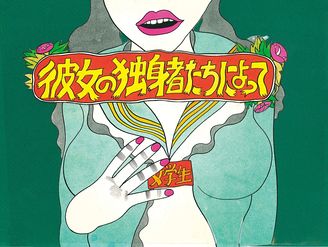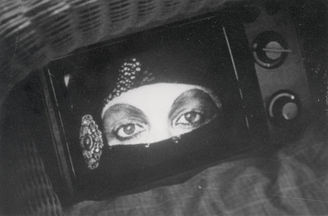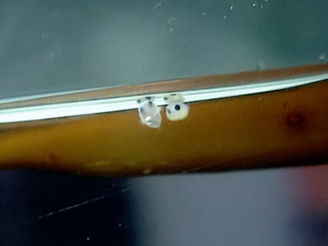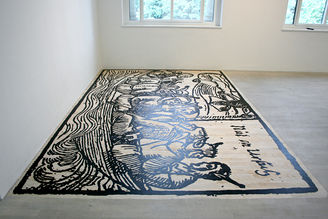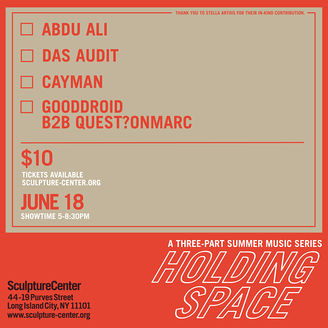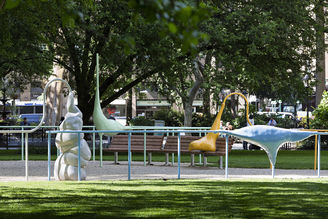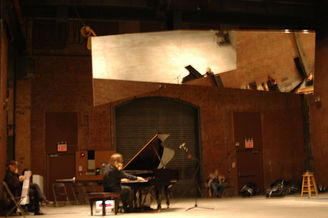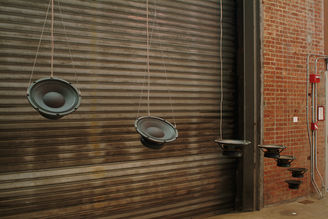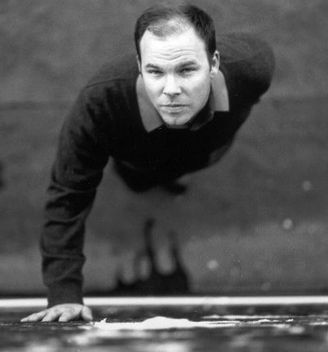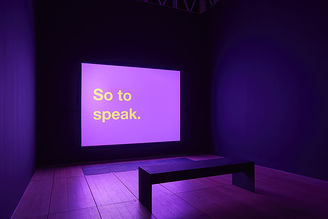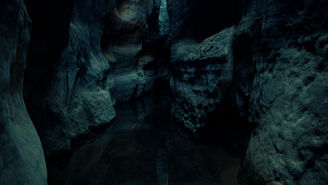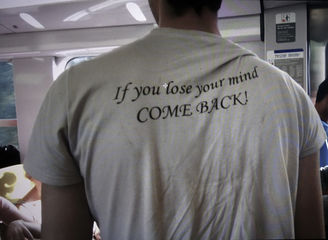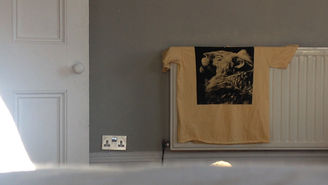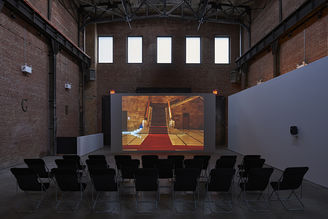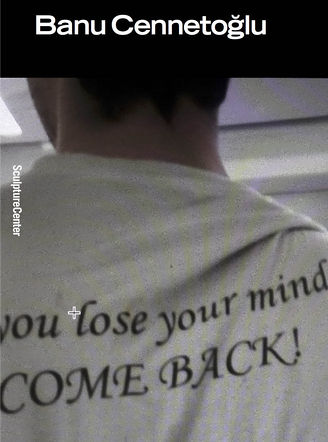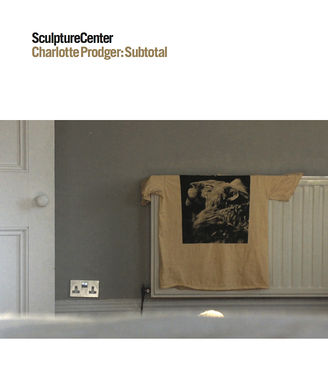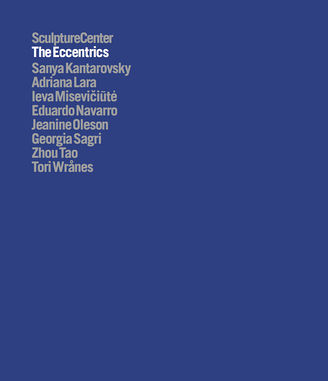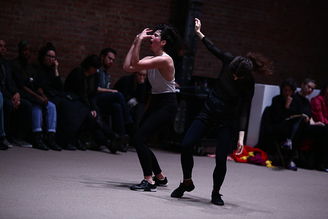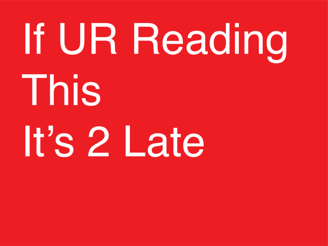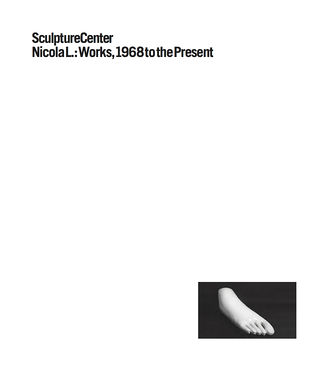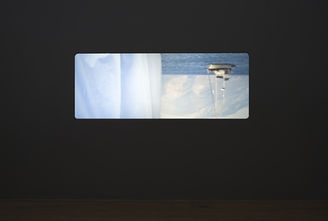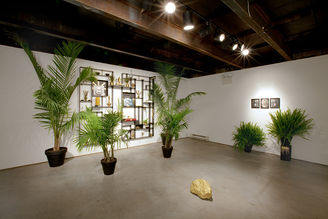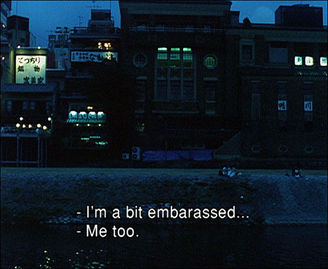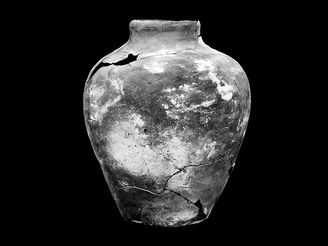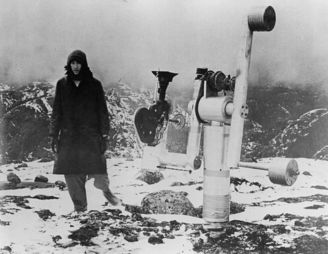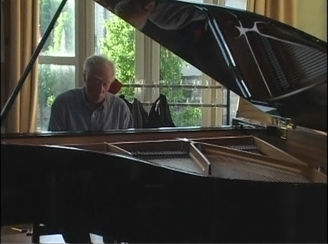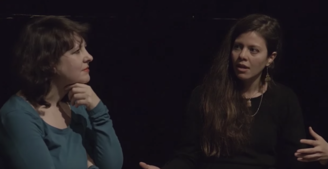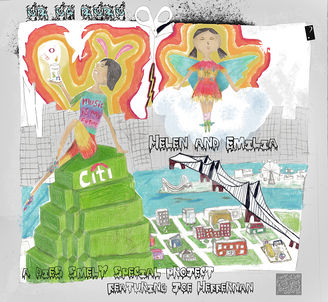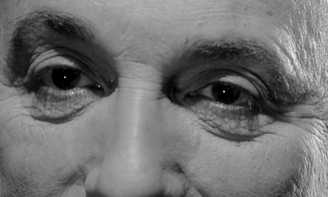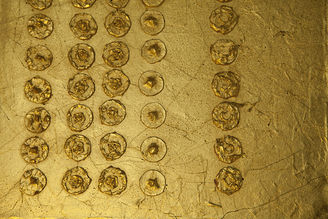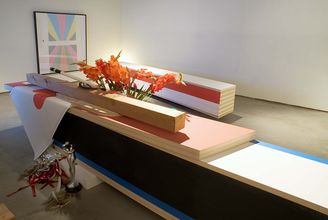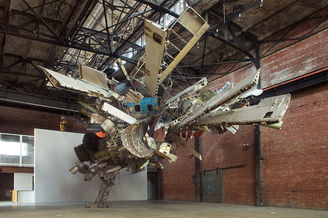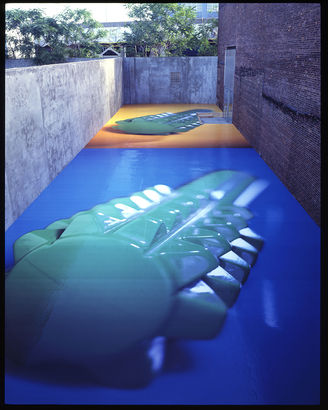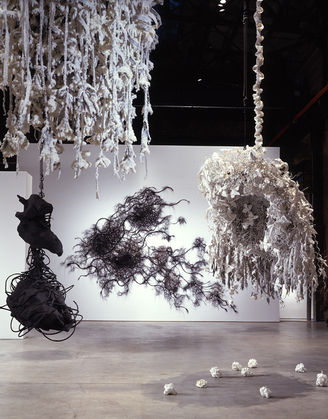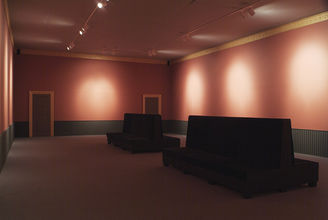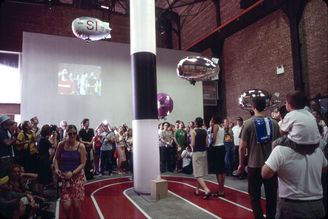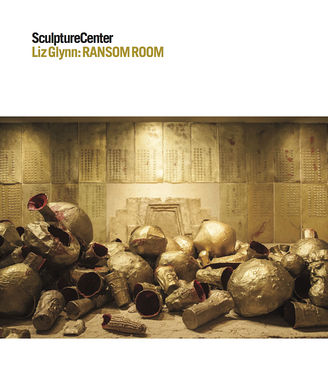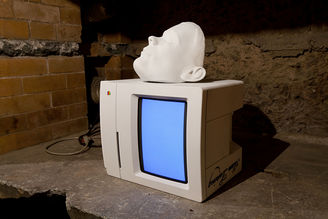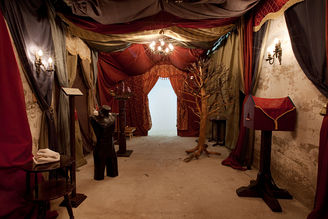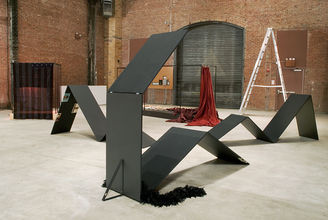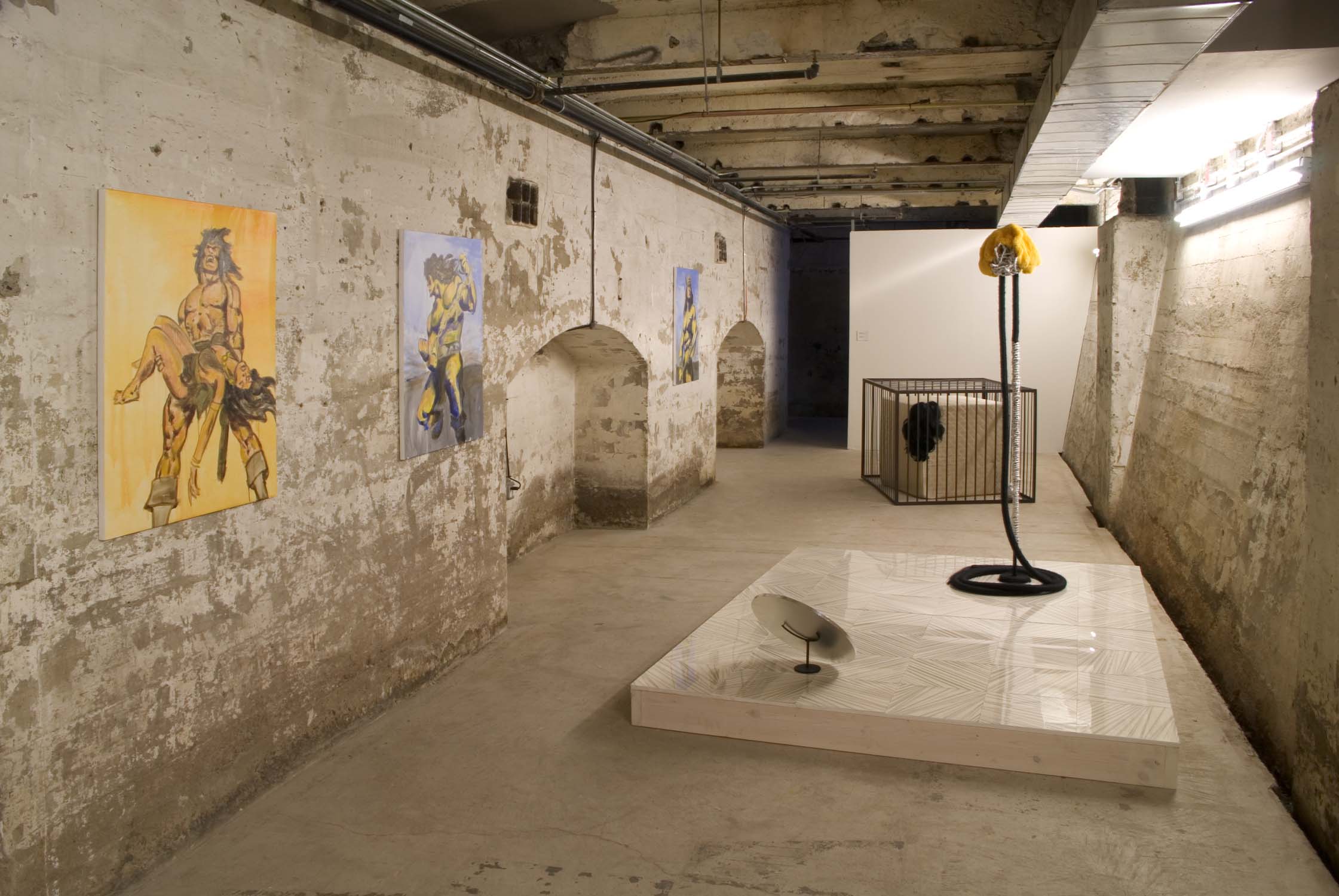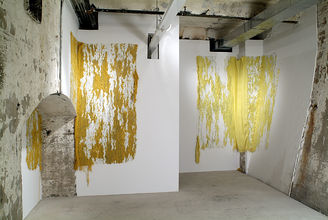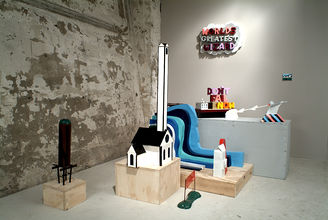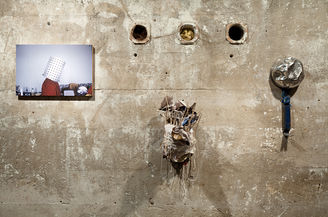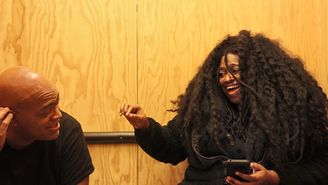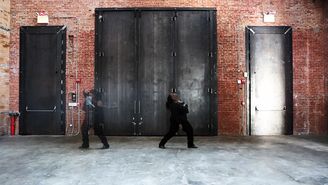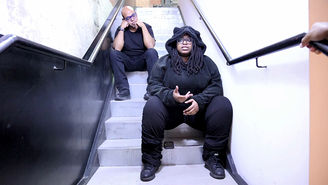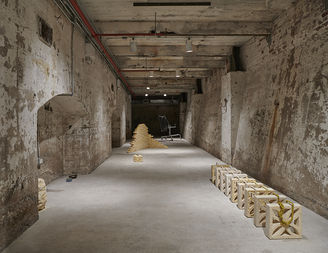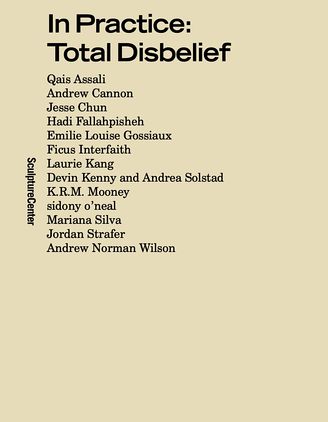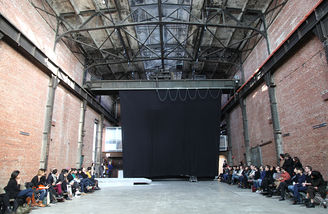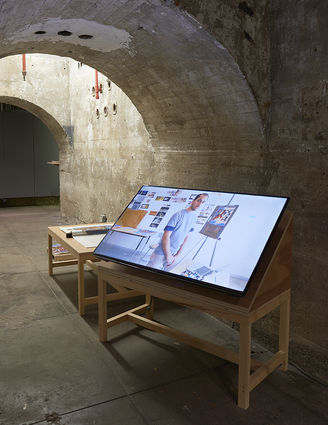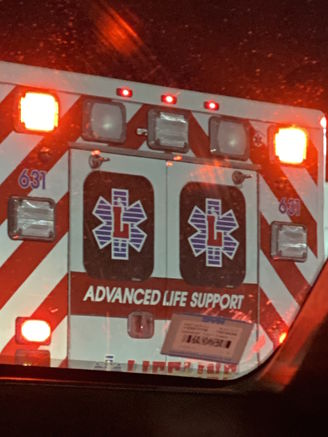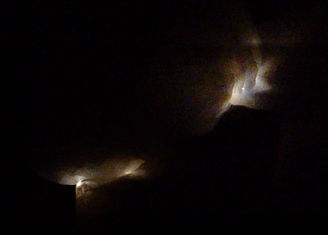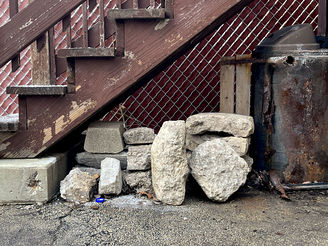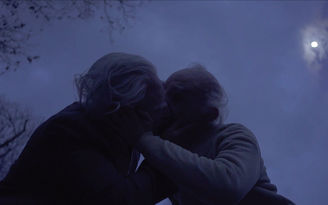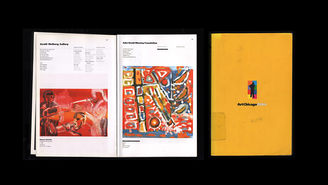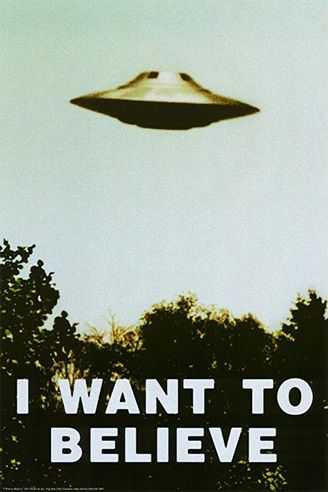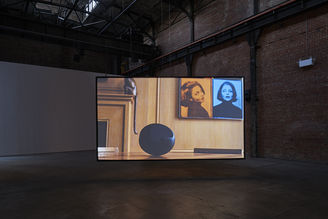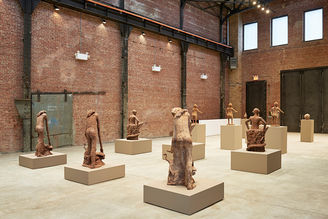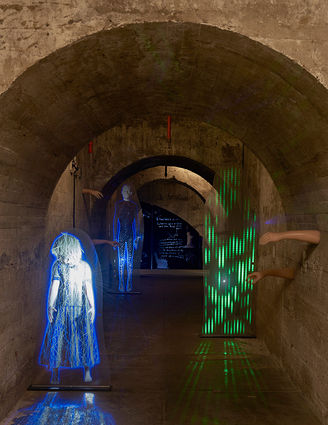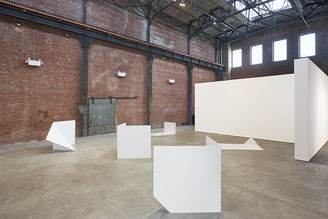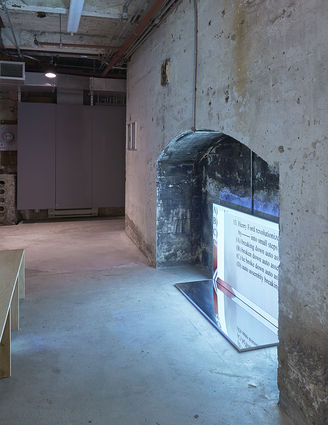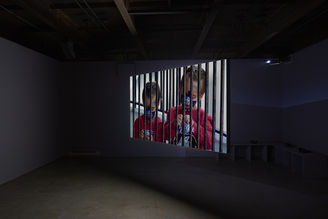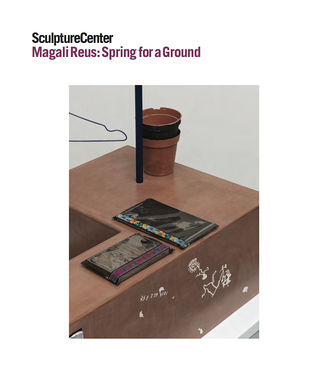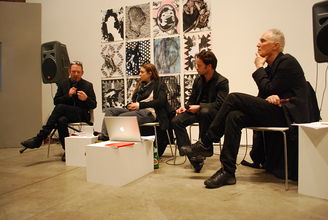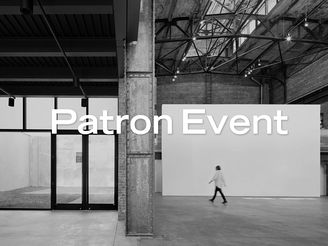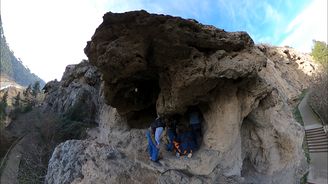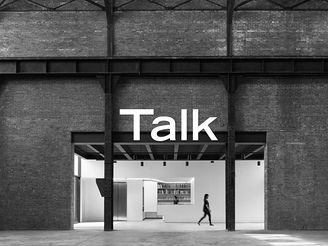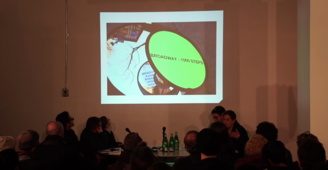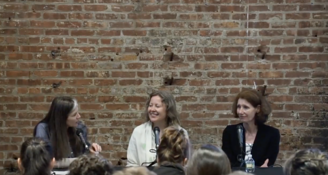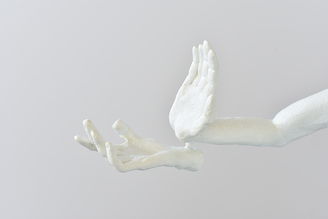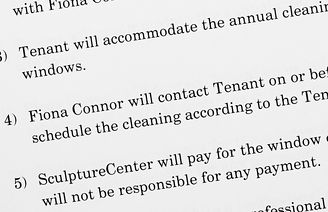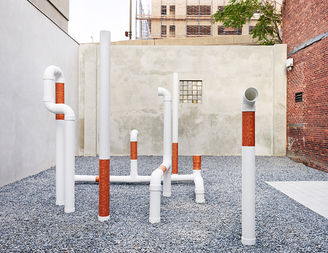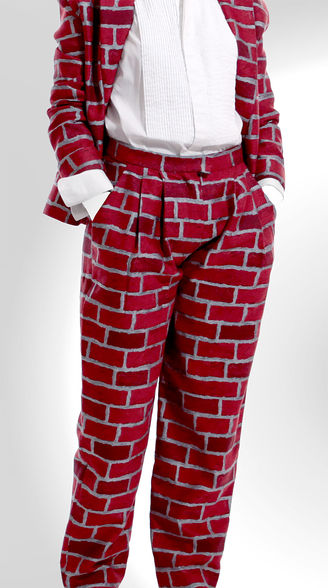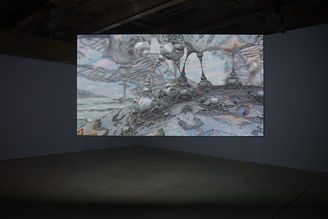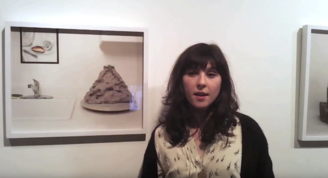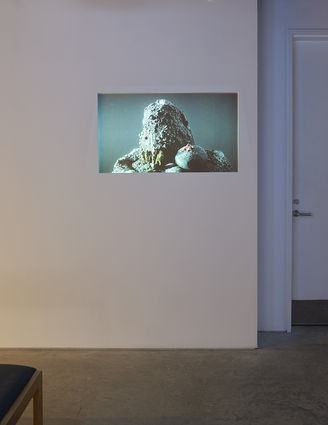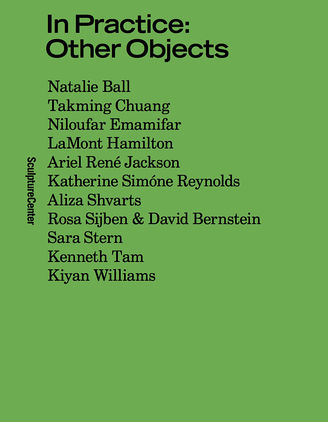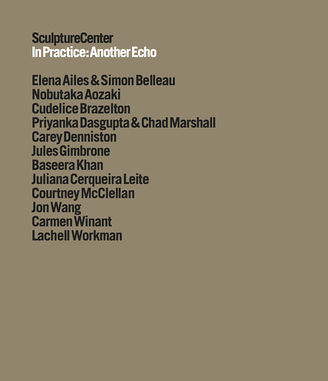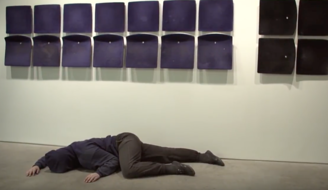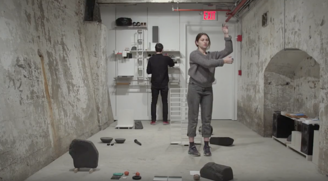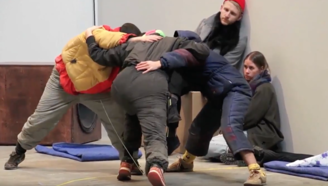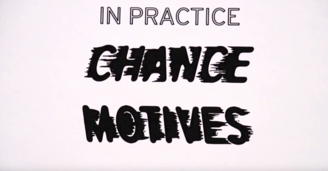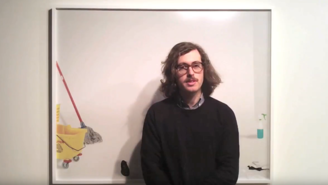In Practice Fall '05
In Practice Fall '05Sep 10–Nov 27, 2005
- Images
- Text
- Events
- Press
- Sponsors
- Related
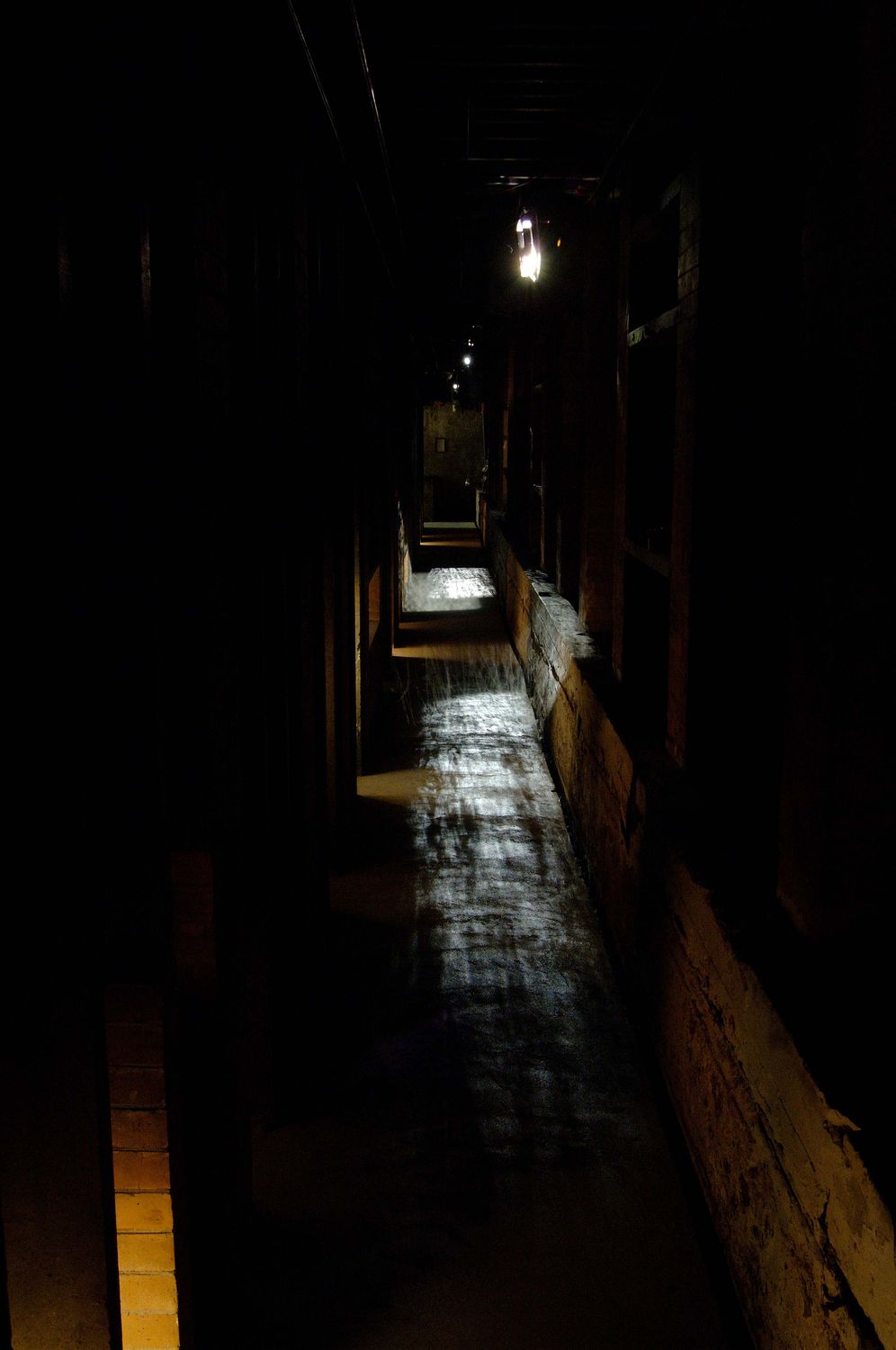
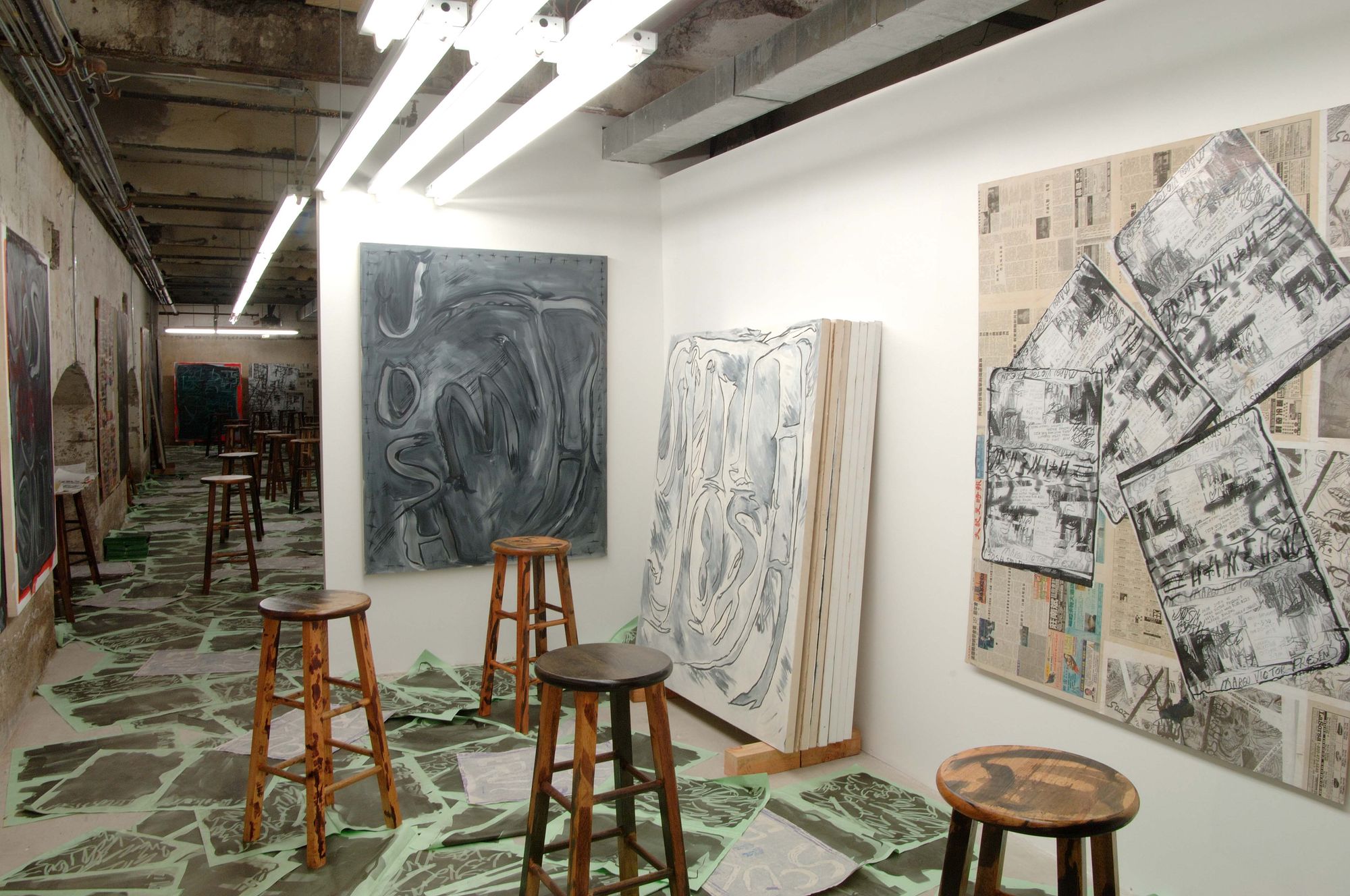
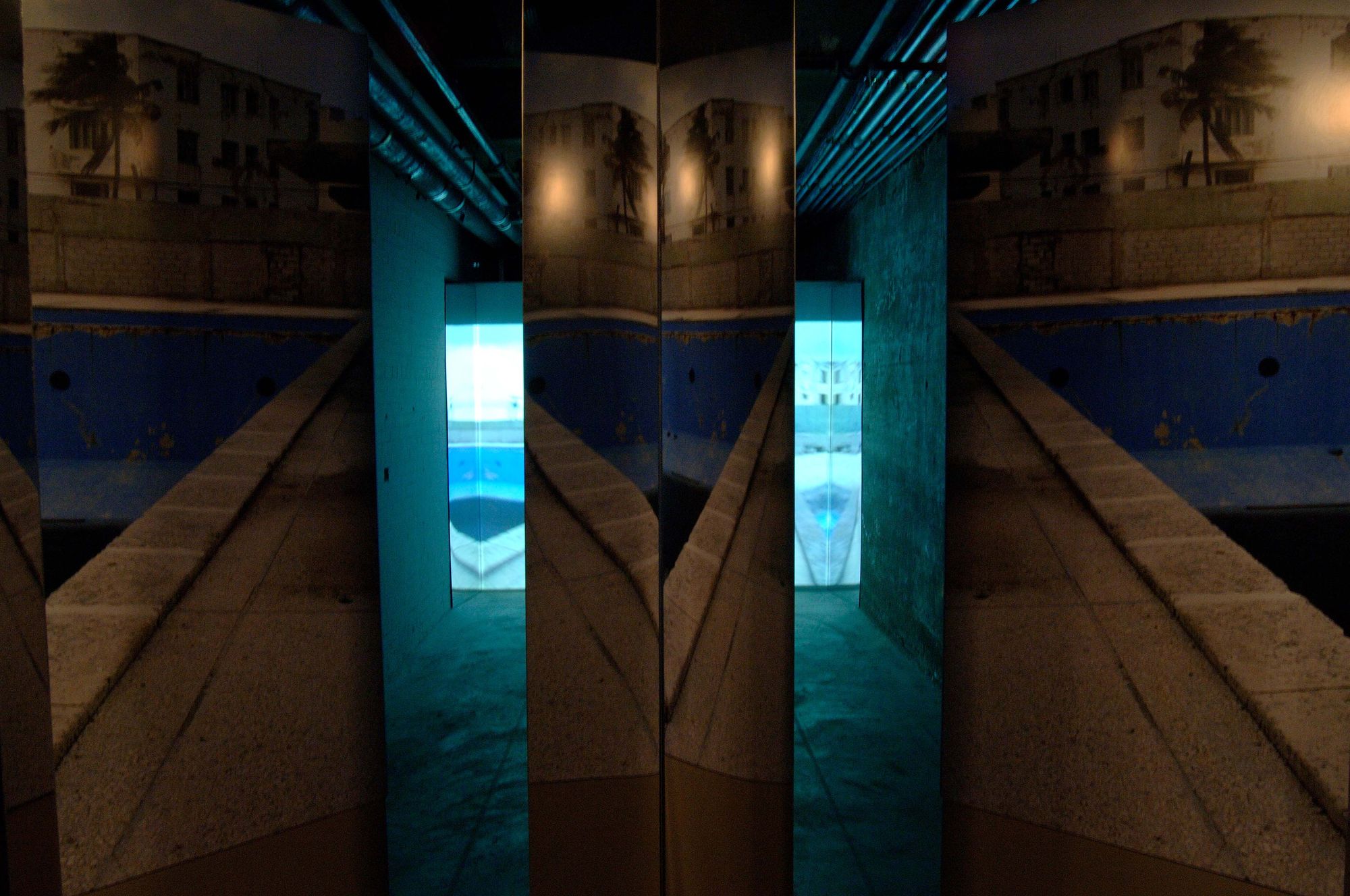
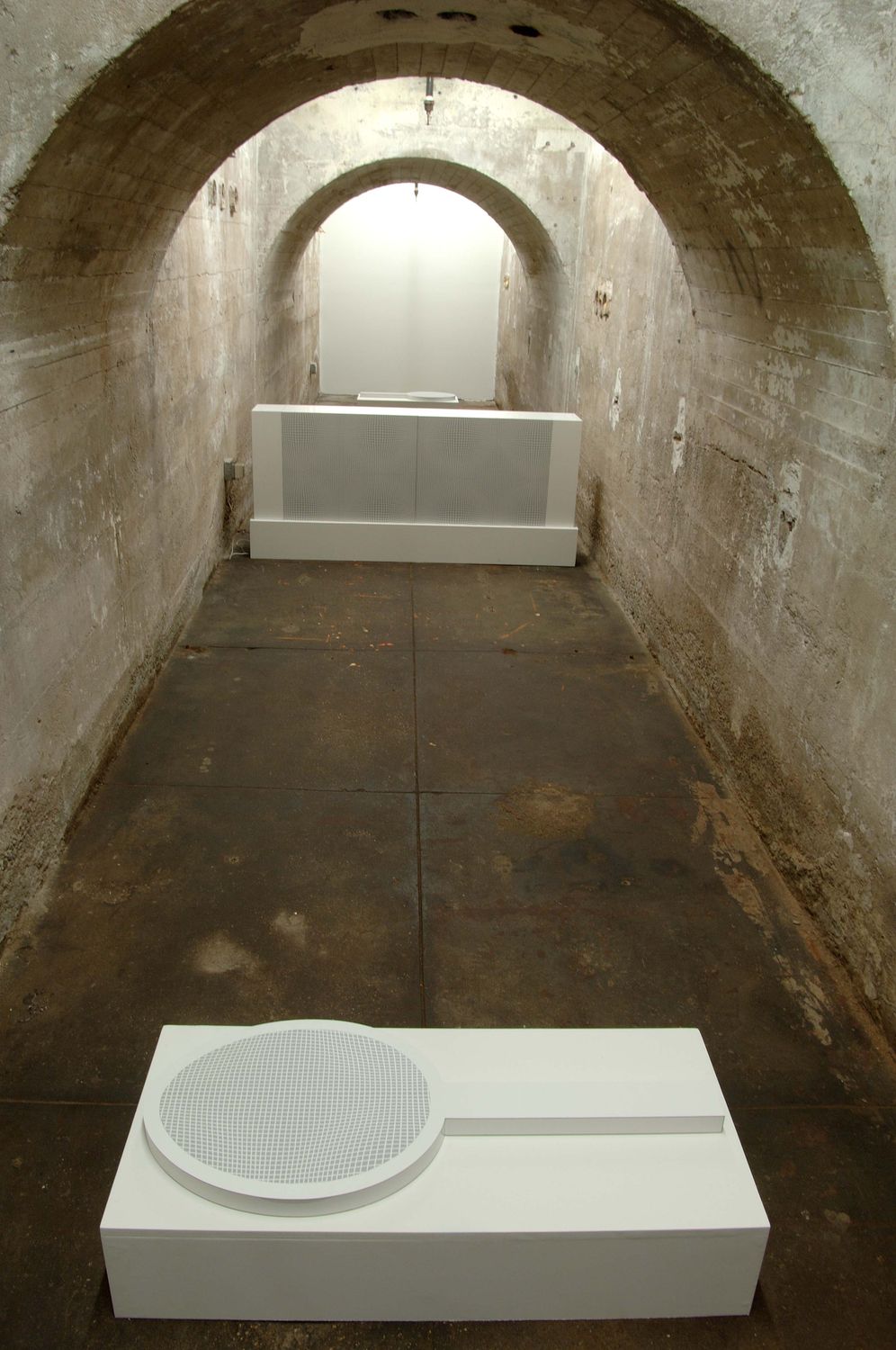
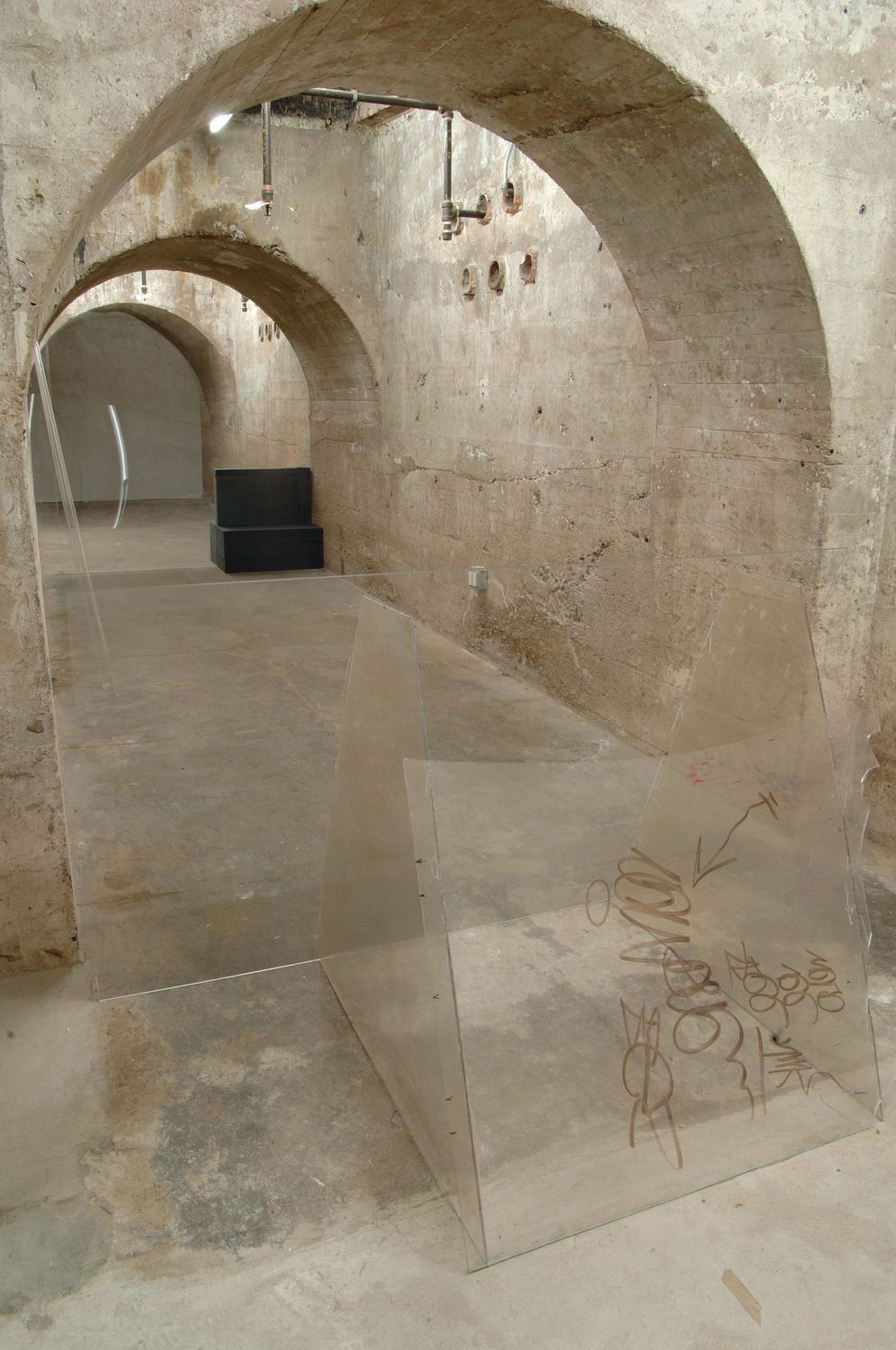
Amy Granat, Space is the Place, 2005. 16mm film and sound; dimensions variable.
The works in this exhibition are commissioned through SculptureCenter's In Practice project series, which supports the creation and presentation of innovative work by emerging artists. The projects are selected individually and reflect the diversity of approaches to contemporary sculpture.
Delia Gonzalez + Gavin Russom have been working collaboratively since 1998. Working in sculpture, sound, and performance, they incorporate references as varied as Greek tragedy, fascist architecture, Latin American mythology, 70s horror films, and disco culture. Their works address historical moments of decadence and extremes, and invoke celebrative, ritualistic, and destructive impulses. For their site-specific installation at SculptureCenter, Gonzalez and Russom combine several elements with which they have worked in the past and create a warped sense of space within the building's vaulted-ceiling galleries. Creating a simplified monument to absent action, the artists place a tennis net and two rackets on individual pedestals poised for a game, but devoid of utility. Constructed of wood, the netting is rendered with grid patterned high gloss formica and the "court" is lit with the intensity of a stadium. The installation becomes at odds with its own physical reality, a distortion that is further accentuated by an abstract soundtrack audible throughout.
Amy Granat's installation explores the surfaces of film and sound. Pursuing the material properties of film - rather than its narratives - Granat cuts, scratches, punches, or spray-paints 16mm film strips, a process that gives shape to the film's image and to its soundtrack. On the occasion of her new installation at SculptureCenter, Space is the Place (2005), the artist installs a series of film projectors and addresses the passageway architecture of the lower-level gallery, a narrow 70-foot long space. Granat turns the linear nature of film into its physical cousin, where endless loops of floating lines, scratches, and distorted noises replace film's traditional sense of time and place.
Susan Leopold presents Inside Out (2005), a video installation where image, color, architecture, and perspective are fractured and scattered throughout SculptureCenter's lower-level gallery. A maze of mirrored walls and large-scale photographs reveal a slowly moving video projection of a desolate and decaying public swimming pool on the outskirts of Havana, Cuba. As viewers pass through the kaleidoscopic environment, the swimming pool continually shifts and realigns itself, suggesting the unconscious boundaries of interior space. Filled with images - projected, reflected, and distorted - the gallery becomes a place of omnipresence, pointing to the artist's interest in surveillance and voyeurism. Although the images are devoid of people, viewers navigate through them in an architecture of mirrored walls, adding their own reflections to the empty landscape and merging the anonymous with the intimate.
Josh Smith presents a large selection of his artist books. A prolific artist primarily known for his paintings of his own name - a repetition that is marked by changes in colors, sizes, and deformations, while the subject remains consistent - Smith also works with collage, drawings, and books. The artist constructs not only images, but situations within which viewers encounter them: his paintings have been presented as installations encompassing all surfaces of the exhibition site. At SculptureCenter, Smith designs a reading room - complete with tables and chairs made by the artist - where viewers become visitors and are invited to spend time looking through the dozens of single edition and photocopied artist books, each of which addresses a different aesthetic and theme. A conceptual artist, Smith is interested in the processes by which we locate meaning in representations, and how repetition, the copy, and the collective consumes and incorporates the gesture, the original, and the individual subject. Making use of limited materials, Smith develops a language of abundance, humor, contradictions, and striking singularity.
Roy Stanfield is drawn to transitional spaces: castaway materials on forgotten rooftops, deserted skateboard ramps, or lifted pages from glossy magazines. For the artist, these spaces contain the vitality of lived experience and the entropy of economic malfunctions, and he uses trophy-objects to carry the energy and contradictions of these spaces into the gallery context. At SculptureCenter, the artist reverses his process by considering the basement exhibition space as a transitional space, caught between a place of imagination and one of abandonment, and he puts the site itself on view through a sculptural installation made entirely of Plexiglas. Untitled (plexi) (all works 2005) consists of a Plexi barrier structure - made of found Plexi pieces, and stained with graffiti mark and discolorations - that partially obstructs the viewer from entering the gallery. Further into the space, Untitled (plug) and 2-7 sticks fully blocks any passage by proposing a Plexi wall with foam plugs, thereby prohibiting access to the remaining part of the gallery. Both constructions act as discreet markers of territory, almost invisible in their transparency, but physically potent in their refusal of the space.
Sponsors
SculptureCenter's exhibitions and public programs are supported by The Andy Warhol Foundation for Visual Arts and The Lily Auchincloss Foundation.
